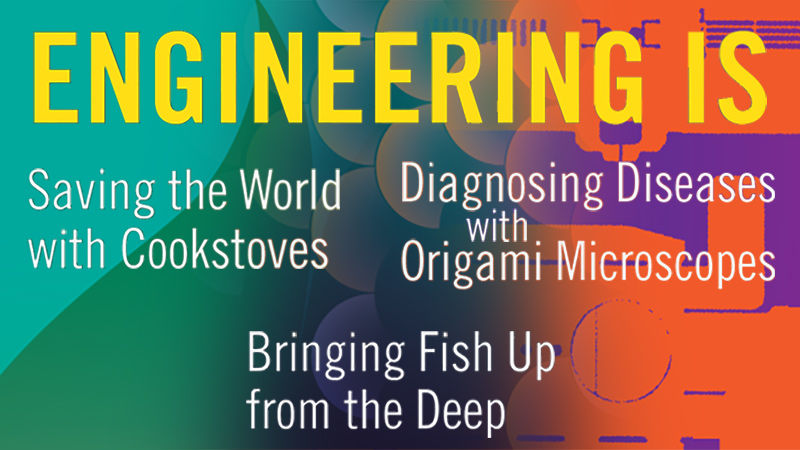The “Engineering Is” e-book series helps teachers incorporate engineering standards from the Next Generation Science Standards into their curriculum. Below are the standards addressed throughout the series.
Disciplinary Core Ideas
ETS1.A: Defining and Delimiting Engineering Problems
Middle School
- The more precisely a design task’s criteria and constraints can be defined, the more likely it is that the designed solution will be successful. Specification of constraints includes consideration of scientific principles and other relevant knowledge that are likely to limit possible solutions.
High School
- Criteria and constraints also include satisfying any requirements set by society, such as taking issues of risk mitigation into account, and they should be quantified to the extent possible and stated in such a way that one can tell if a given design meets them.
- Humanity faces major global challenges today, such as the need for supplies of clean water and food or for energy sources that minimize pollution, which can be addressed through engineering. These global challenges also may have manifestations in local communities.
ETS1.B: Developing Possible Solutions
Middle School
- A solution needs to be tested, and then modified on the basis of the test results, in order to improve it.
There are systematic processes for evaluating solutions with respect to how well they meet the criteria and constraints of a problem.
Sometimes parts of different solutions can be combined to create a solution that is better than any of its predecessors.
Models of all kinds are important for testing solutions.
High School
- When evaluating solutions, it is important to take into account a range of constraints, including cost, safety, reliability, and aesthetics, and to consider social, cultural, and environmental impacts.
- Both physical models and computers can be used in various ways to aid in the engineering design process. Computers are useful for a variety of purposes, such as running simulations to test different ways of solving a problem or to see which one is most efficient or economical; and in making a persuasive presentation to a client about how a given design will meet his or her needs.
ETS1.C: Optimizing the Design Solution
Middle School
- Although one design may not perform the best across all tests, identifying the characteristics of the design that performed the best in each test can provide useful information for the redesign process—that is, some of those characteristics may be incorporated into the new design.
- The iterative process of testing the most promising solutions and modifying what is proposed on the basis of the test results leads to greater refinement and ultimately to an optimal solution.
High School
- Criteria may need to be broken down into simpler ones that can be approached systematically, and decisions about the priority of certain criteria over others (trade-offs) may be needed.
Science and Engineering Practices
- Asking questions and defining problems
- Developing and using models
- Planning and carrying out investigations
- Analyzing and interpreting data
- Using mathematics and computational thinking
- Constructing explanations and designing solutions
- Engaging in argument from evidence
- Obtaining, evaluating and communicating information
Cross-cutting Concepts
- Patterns
- Cause and effect: Mechanism and explanation
- Scale, proportion and quantity
- Systems and system models
- Energy and matter: Flows, cycles and conservation
- Structure and function
- Stability and change
